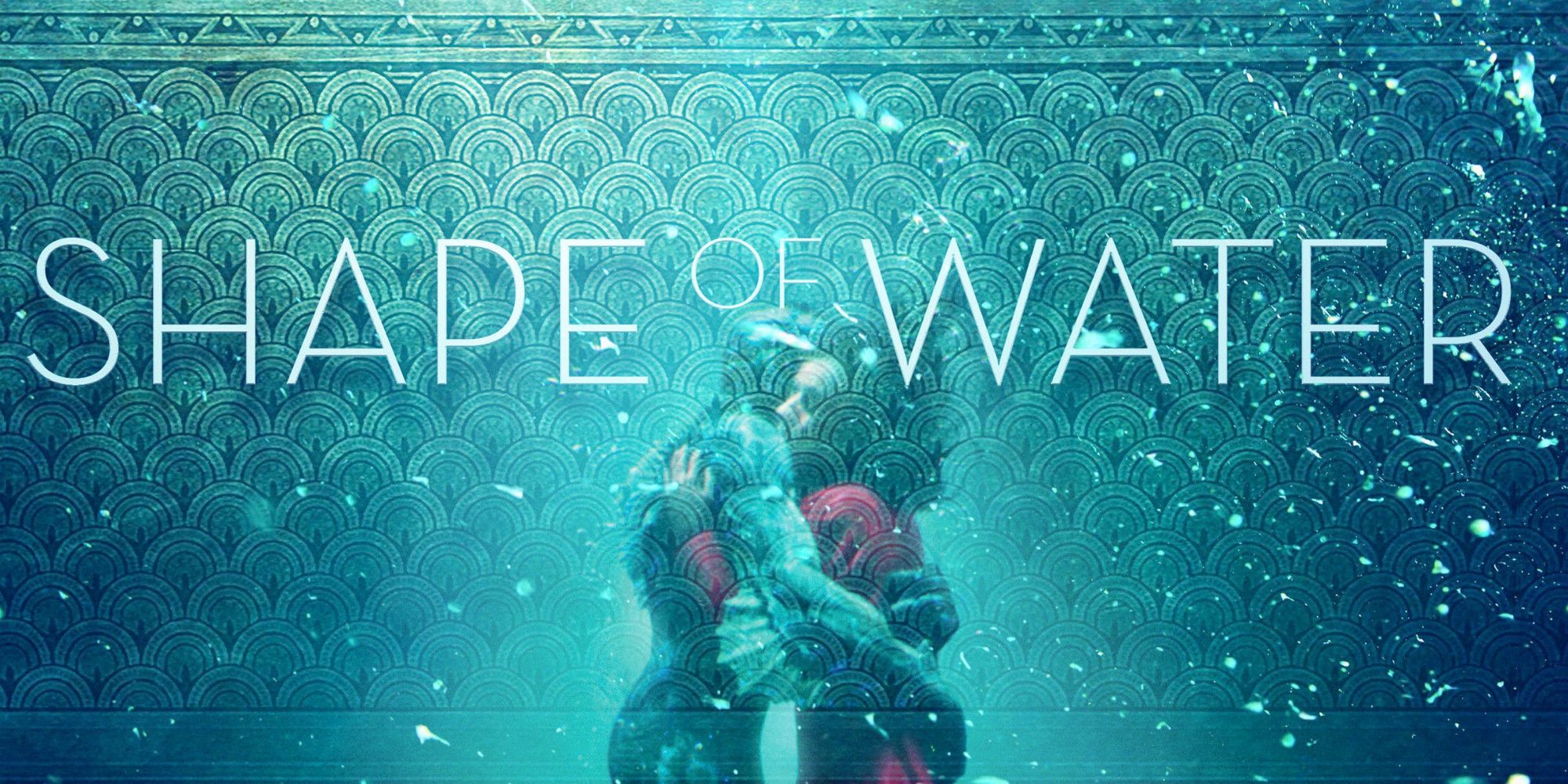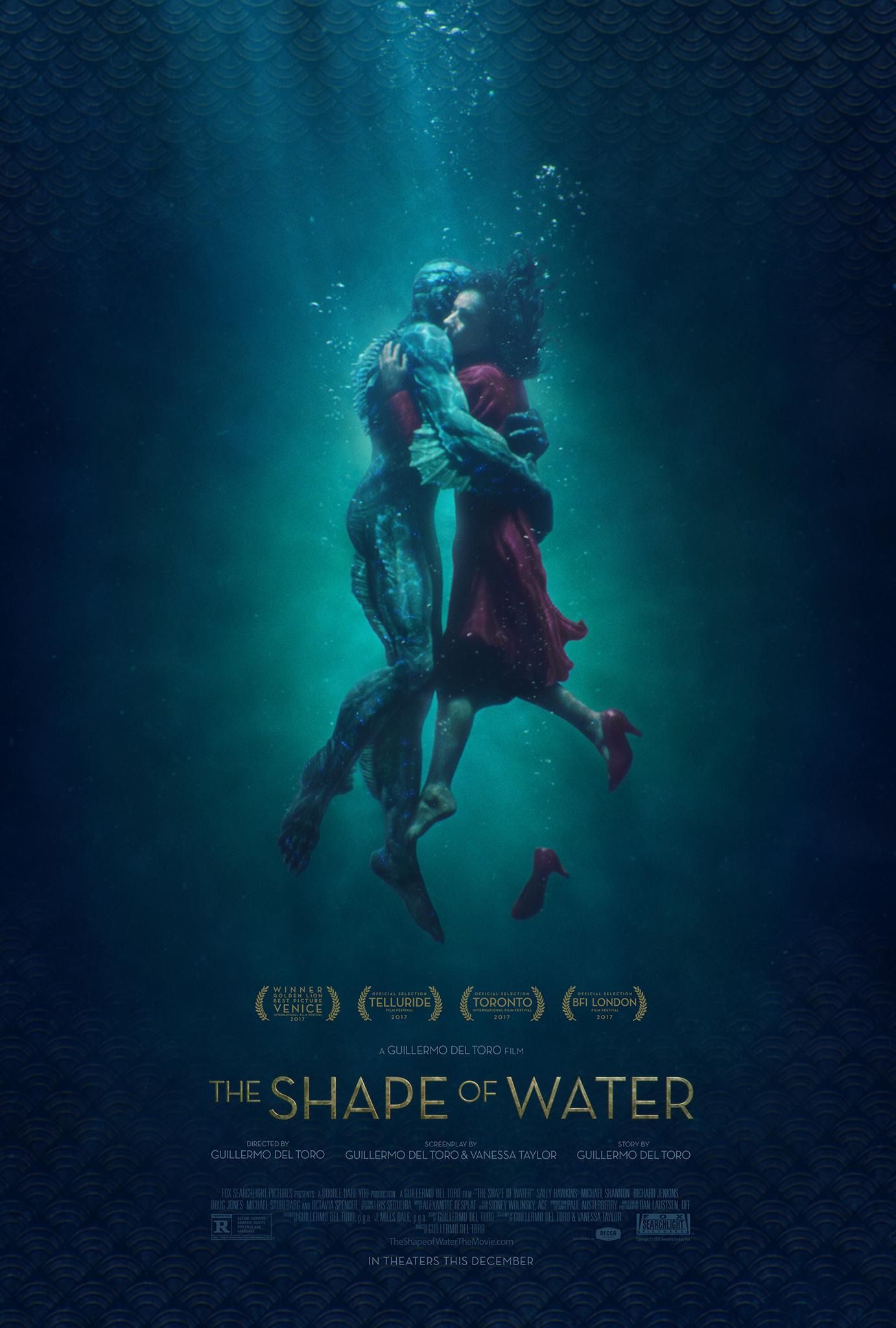Warning: Major SPOILERS ahead for The Shape of Water
-
Guillermo del Toro's The Shape of Water is a twist on monster movies and fairy tales; we explain what the ending means and how it all ties together. Del Toro has made a name for himself in Hollywood for his wildly creative genre films. Though he grew a following with the likes of Blade II and Hellboy, he became a household name thanks to the 2006 dark fantasy film Pan's Labyrinth. Since then, he's continued to produce dark, evocative works, including Pacific Rim and Crimson Peak, to the delight of his fans. Now, his latest feature film is The Shape of Water, which puts a new spin on both monster flicks and fairy tales.
The Shape of Water follows a mute woman named Elisa (Sally Hawkins) who works as a nighttime janitor at government research facility in 1960s Baltimore. One day, Colonel Richard Strickland (Michael Shannon) brings in a new asset, which Elisa discovers is a humanoid creature (Doug Jones). With the help of her friends Zelda (Octavia Spencer) and Giles (Richard Jenkins) - as well as some aid from one of the scientists, Dr. Robert Hoffstetler (Michael Stuhlbarg) - Elisa helps the creature escape. With Strickland's superior, General Hoyt (Nick Searcy) putting pressure on him to find the missing asset, Strickland becomes obsessive in his need to locate the creature and those who helped free him.
Related: The Shape of Water Review
The third act of del Toro's The Shape of Water largely deals with Strickland's deteriorating mental state as he searches for the person or people responsible for stealing the asset, while Elisa grows more and more in love with the creature. As her feelings for the creature grow, Elisa worries about the approaching date she planned to set him free back into the ocean by way of a canal. These threads all come to a head when Strickland follows Elisa and the creature to the canal where he shoots them both. The creature heals his own wounds, kills Strickland by slicing the man's throat with his claws, and takes Elisa into the water where he heals her wounds and seemingly turns the scars on her throat into gills.
So what does it all mean and how does it all tie together? Let's break down The Shape of Water ending.
Where Is The Asset From?
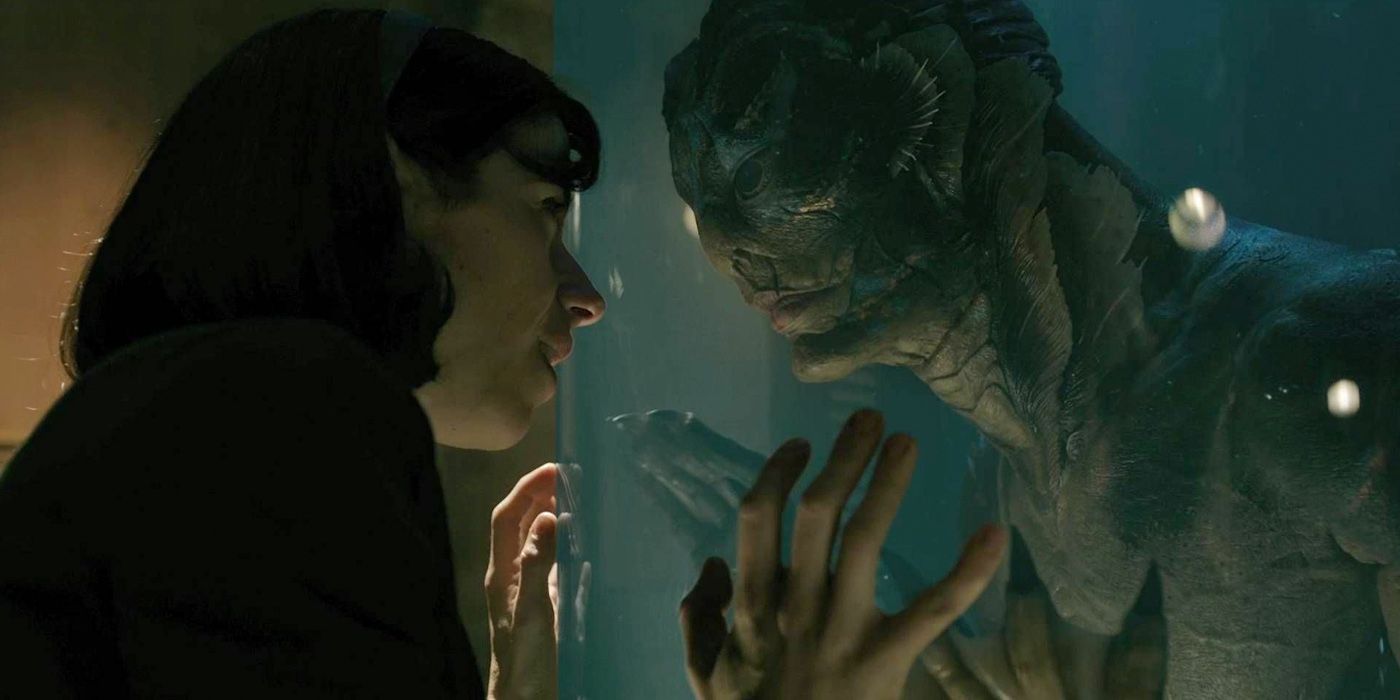
The Shape of Water falls into the realm of magical realism, which is a genre of literature and film wherein the story is grounded in an incredibly realistic reality, but is combined with elements of magic. Between Strickland's conservative beliefs, Hoffstetler's secret identity as a KGB spy, and other hallmarks of Cold War era America, The Shape of Water is firmly grounded in its 1960s setting. However, the Asset is a magical creature introduced to this environment who uses his unexplained abilities throughout the film.
In the movie, it's explained that Strickland discovered the Asset in South America - more specifically the Amazon - where he was being worshipped as a god. This makes sense considering the abilities he displays over the course of the film. Not only is the creature able to heal himself, he can also heal others. When Giles is scratched, the Asset heals his arm, but the creature's powers extend even beyond that. Throughout the early part of the film, Giles dons a toupee whenever he leaves his apartment because he is balding, but after the creature uses his abilities on Giles' head, the man's hair naturally grows in. Whether the Asset is actually a god or simply a creature man cannot yet understand is left up to interpretation, with different characters seeing him in a different light.
Although Strickland says the Asset is from the Amazon, he obviously can't survive in a strictly freshwater environment - which is why Hoffstetler gives Elisa a cannister of materials to mix in with the water she keeps the creature in. The creature can also survive out of water for short periods of time, as evidenced by him leaving Elisa's apartment and her finding him in the movie theater. Still, his natural habitat is large bodies of water, and Elisa eventually returns him to his home - where she actually joins him for their own happily ever after ending.
Elisa's Past Explained
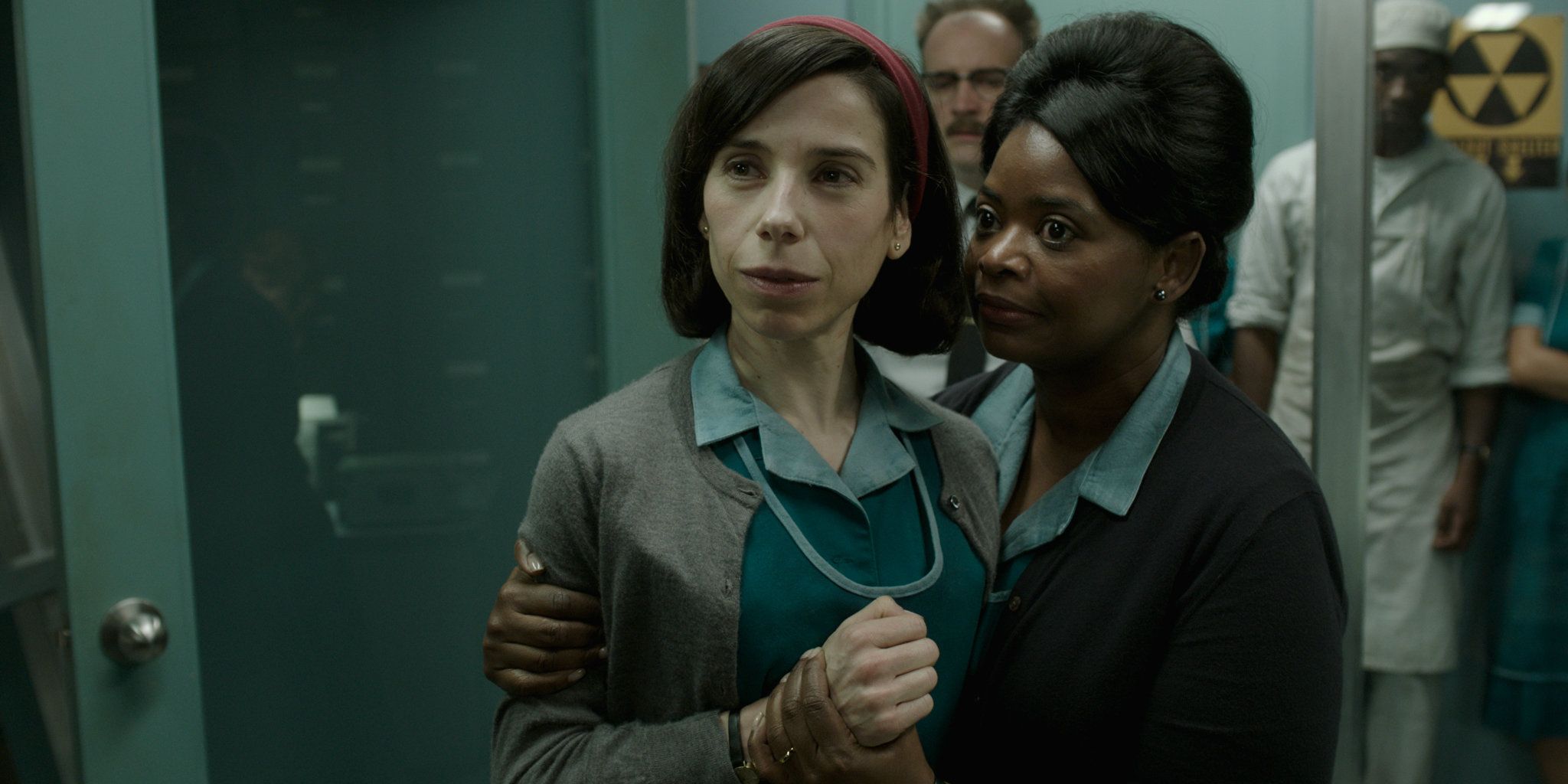
Elisa's past is perhaps even more mysterious than that of the creature, with insights offered throughout the film. Viewers first get a glimpse of the scar-like marks on her neck early on, but it's later revealed by Zelda that Elisa was found in a river as a child and taken in as an orphan. Strickland presumes the marks on her neck are the result of an accident that also impacts her vocal chords and rendered her mute. But, at the end of The Shape of Water, the creature turns those marks into gills that enable Elisa to live with him underwater.
Elisa's inability to talk and the Asset lacking the right vocal chords to speak thematically ties them together from their first meeting. Since Elisa is used to communicating differently to other humans because she's mute, she's willing and able to communicate with the creature in other ways, which is how they form a bond. In human society, though, she's an other, set apart by her muteness and by the scars on her neck. In the ultra-conservative society of the 1960s, coming off the second Red Scare and McCarthyism in the '40s and '50s, Elisa's otherness stands out even more starkly. But, that otherness is what bonds Elisa to the creature and leads her to fall in love with him - and he with her.
Related: Why The Shape of Water is An Oscar Front-Runner
Still, could their bond go even deeper? Although what we know of Elisa seems to indicate she had a tragic childhood that included some kind of accident rendering her mute and ended with her left orphaned in a river, another interpretation might be that Elisa was originally an underwater creature much like the Asset. However, since she was adopted by humans, she became more human-like in appearance and nature, causing her own gills to close. Following this logic, the Asset doesn't turn her scars into gills, but rather simply reminds her gills how to work so she can breathe underwater again.
Of course, if that is the case, it's unclear why Elisa looks so human with the exception of her gills. Plus, given del Toro's inspiration for The Shape of Water, particularly Creature From the Black Lagoon, and his intent to depict a relationship between a human and a monstrous being, we may be able to presume Elisa is meant to be interpreted as human. Even still, her past and similarities with the creature cause the pair to fall in love and she inevitably chooses to live the rest of her life with him underwater.

Guillermo del Toro's Love of Film
The Shape of Water contains a number of references to classic films, though, of course, the two most obvious are Creature From the Black Lagoon and Beauty and the Beast. However, del Toro's latest upends the conventions of both those movies. Creature From the Black Lagoon is a classic monster movie released in 1954 wherein the creature is the antagonist of the movie. At the end of that film, the creature is shot multiple times and sinks to the bottom of the lagoon while the remaining humans, including the woman the monster at one point captured and brought to his lair, escape. The Shape of Water instead reimagines the creature as a sympathetic magical being with whom the main female character falls in love. Turning the "monster" into the hero completely upends the conventional monster movie story.
However, del Toro's The Shape of Water also toys with conventions of fairy tales, particularly those about women turning men cursed to live as beasts or other creatures back into humans. Those fairy tales perpetuate the idea that a woman's love humanizes a man, a convention we still see in romantic comedies today. Instead of following that conventional storyline, The Shape of Water features the Asset turning Elisa into a nonhuman creature by giving her the ability to breathe underwater. Arguably, this demonstrates a much more balanced dynamic between Elisa and the creature, one in which their love for each other is equally displayed. At the very least, though, it upends the idea that the man must be turned into a human in order for both he and the female character to have a happy ending.
Related: Guillermo del Toro Regrets Declining Universal Monsters
Through the movie del Toro showcases his obvious love for monster features and fairy tales, but The Shape of Water also offers a different interpretation of those genres. In fact, it seems The Shape of Water is del Toro's answer to what he believed previous monster films were lacking. There is a romantic aspect to many monster movies, with the monsters becoming infatuated with a beautiful woman. But, as the antagonists of their films, the monsters were always defeated by the end. In The Shape of Water, the monster gets to be the romantic lead, and del Toro's film follows through on the romantic ideation established early on.
Of course, the way in which The Shape of Water differs from typical monster movies and fairy tales also works as an act of rebellion against those storytelling conventions. Those monster flicks and fairy tales usually embody conventional and conservative ideals as far as they relate to otherness and relationships between men and women. But The Shape of Water is much more progressive in its ideals, celebrating the Asset's otherness and depicting an equal relationship between him and Elisa. The Shape of Water showcases its characters bucking convention within the setting of the '60s, but the movie as a whole does the same within the larger scope of cinema.
The Shape of Water's Religious References
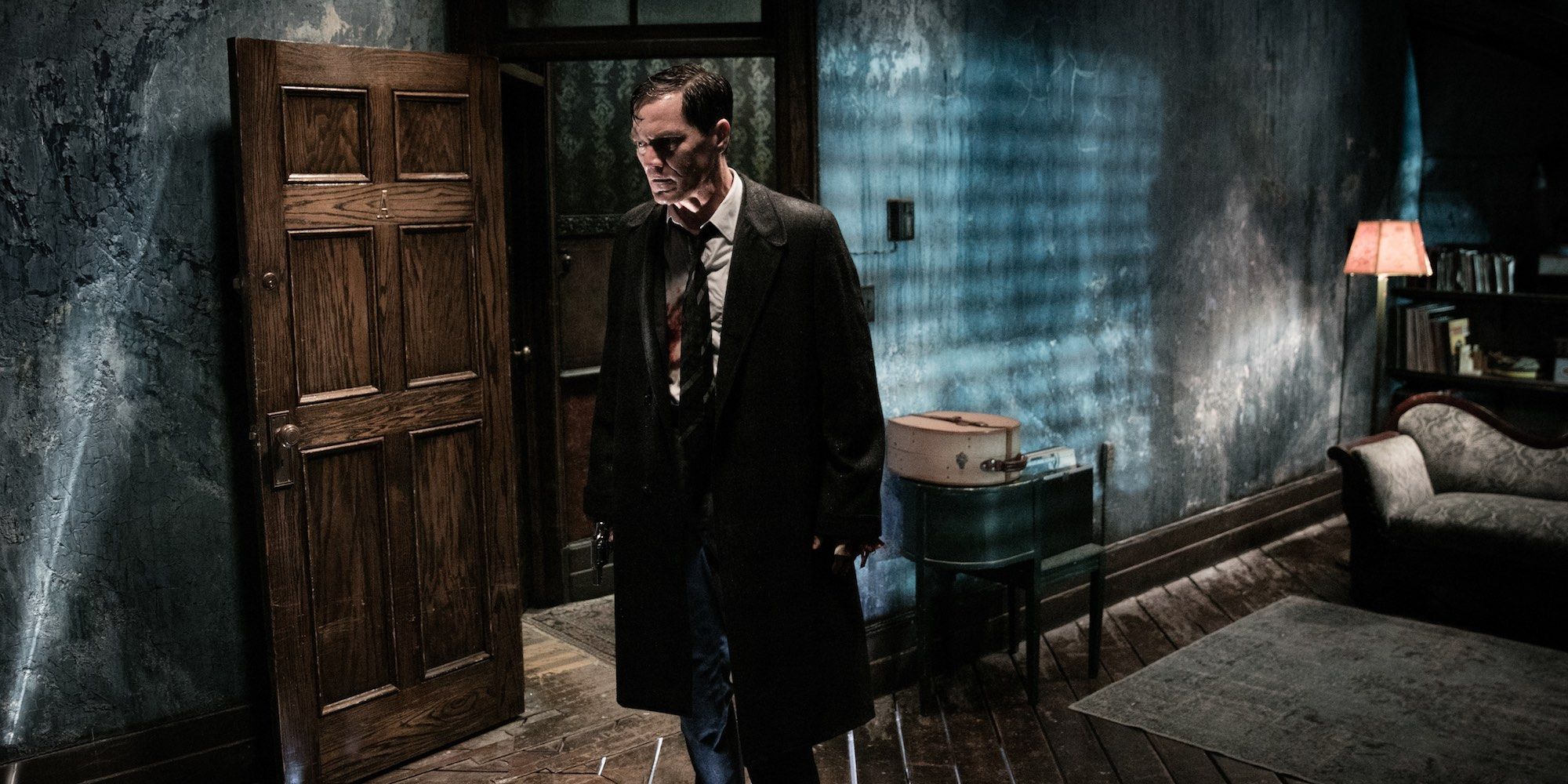
Throughout The Shape of Water, Strickland repeatedly references the story of Samson and Delilah from the Book of Judges in the Hebrew Bible. As the story goes, Samson is a powerful man with strength greater than any other man who falls in love with Delilah. However, he is betrayed by Delilah, who uses Samson's love for her against him to learn the secret of his power; she gives that information to his enemies. Stealing his strength, Samson's enemies subjugate and demean him. At his lowest, Samson turns to God for help and is granted his strength once again. He uses it to bring down a temple on the heads of all his enemies, killing himself along with them.
The way Strickland tells the story, he obviously views Samson's vengeance against his enemies, even at the expense of his own life, as a victory. Certainly, in many interpretations of the story, Samson is viewed as a hero - even in Cecil B. DeMille's 1949 adaptation of the story in Samson and Delilah - but The Shape of Water offers a different interpretation. The story of Samson and Delilah is parallelled in The Shape of Water with Strickland and Elisa, he being a powerful man within American society at the time and her being a woman who betrays him and brings about his downfall. However, Strickland isn't the hero of the story, Elisa is.
Instead, Strickland is often depicted exhibiting hypocrisy. He is prideful but demands those around him to display humility, he uses his own power to undermine others but doesn't tolerate being questioned by his own superior, he is religious but uses religion to suit his own needs, he resents the Asset for his otherness but is attracted to Elisa for her differences. Further, because of his old fashioned beliefs, he turns a blind eye to the possibility that Elisa helped the creature escape and doesn't learn of what happened until much later - and only by exerting his power in a monstrous way over Zelda.
It all comes to a head in the climactic scene of The Shape of Water when Strickland is confronted by the creature, who has survived multiple gunshot wounds. Though Strickland views himself as Samson, with Elisa being Delilah and the Asset as Samson's enemies, he's forced to recognize the flaws in this thinking, evidenced in his line, "You are a god." Inevitably, he dies because he interpreted himself as Samson. Strickland's entire view of religion is called into question by the end; though he previously said men were made in God's image, Strickland recognizing the Asset as a god questions those beliefs. In this, The Shape of Water effectively challenges what Strickland, and the audience, believes about religion versus the realities of the world.
Next: Guillermo del Toro is Taking a Year Off From Directing
